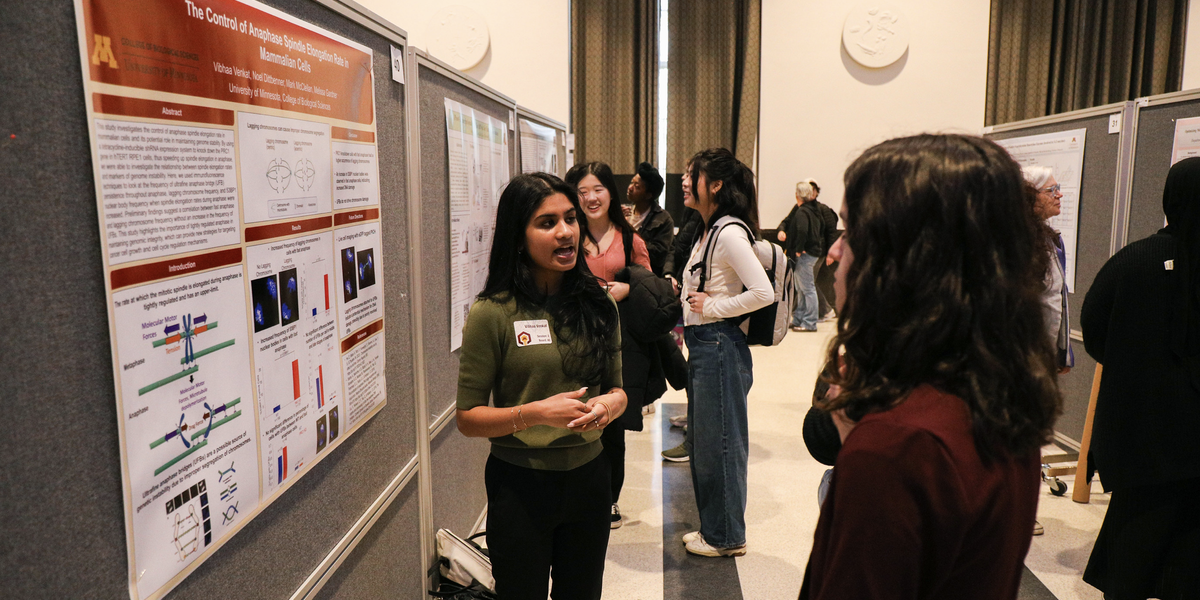
Near the end of every school year, the University of Minnesota hosts a University-wide Undergraduate Research Symposium. The symposium gives undergraduates a chance to practice their “elevator pitch” and share the final conclusions of personal research projects. Some of these projects are years in the making, others are the result of data collected over weeks. This year, we asked a number of graduating CBS students to share a bit about their research experience. The following posters represent a wide range of topics across the college. Full photo gallery can be found here.
Big picture question: How can we make the admissions process more equitable for the University of Minnesota’s Genetic Counseling program?
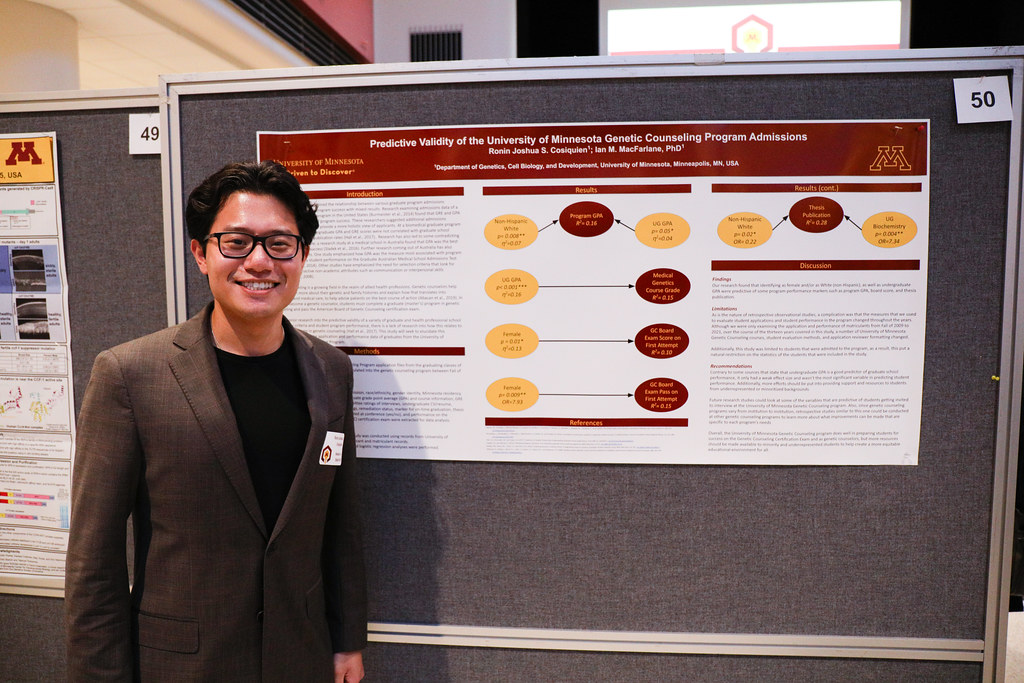
Roj Cosiquien is a graduating senior and Astronaut Scholar majoring in genetics, cell biology and development. Cosiquien plans to start medical school in the fall and hopes to use this research experience to create a more equitable future for clinical practice. “Diversity, equity and inclusion are super important to the medical field and it’s important to keep in mind in terms of patient care. Also, as someone who’s just been through the med school application process, I hope that this is also something [admissions counselors] keep in mind.”
Big picture question: How does tree diversity affect ecosystem functioning?
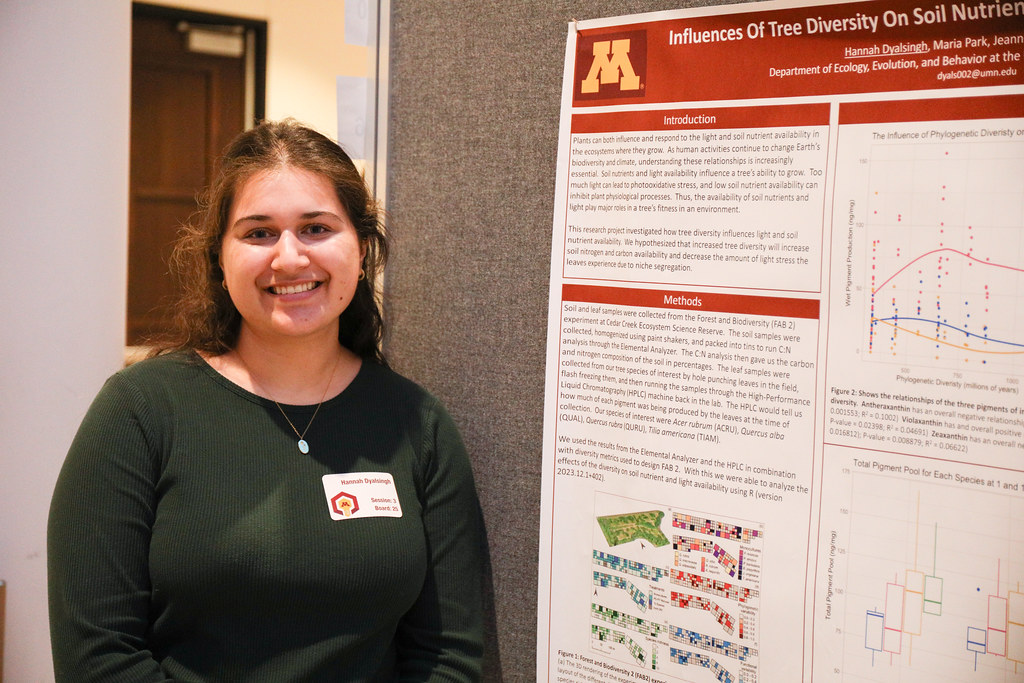
Hannah Dyalsingh is a graduating senior majoring in biology. Dyalsingh’s research was supported by the Dean’s Research program. Of conducting undergraduate research, Dyalsingh says, “I really really enjoyed getting field experience. With classes, I’ve only been able to work in labs, but with this I got to go out and collect the samples and do the whole experiment from start to finish, which was super cool.” Dyalsingh hopes to pursue graduate school after taking a gap year and identifying a research area of interest.
Big picture question: How do archaea fix nitrogen and how can we examine these mechanisms in the light of nitrogen deficiencies in today’s rapidly changing environments?
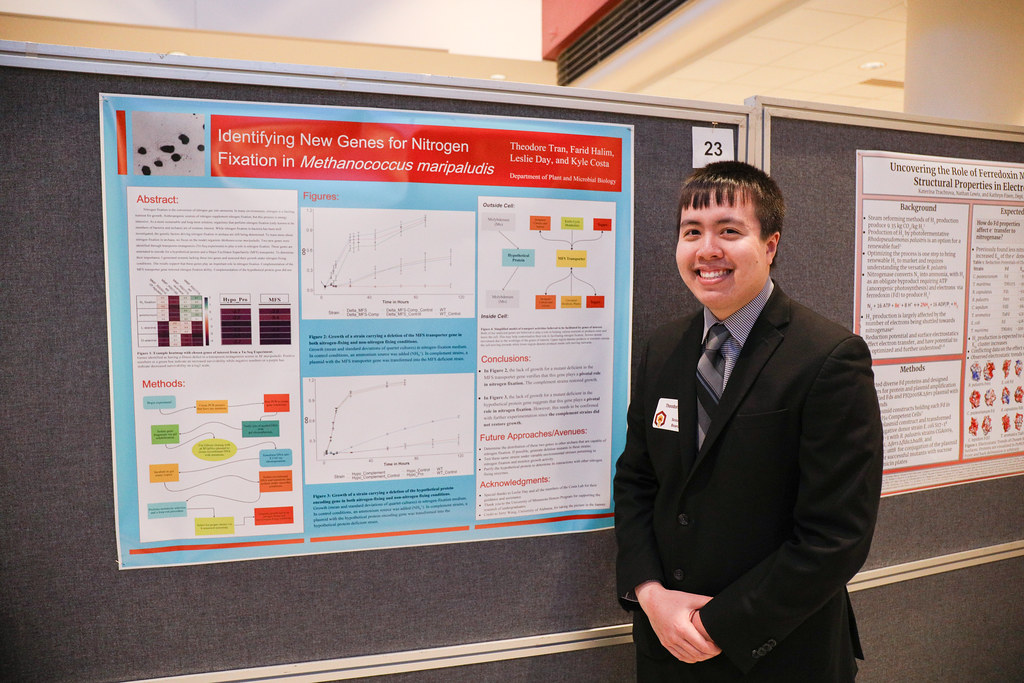
Theodore Tran is a graduating senior majoring in Biochemistry. Tran just got accepted to the Minnesota Medical school and thinks this research experience will provide an informative perspective to clinical studies. “I learned a lot about how both daunting and rewarding research can be. I’ve done it for two plus years but I’m still learning how to articulate my thoughts clearly [to a wider audience.] You need to have continual practice and continued support like mentorship,” says Tran. “But when I’m able to put it together and get everything working it’s super satisfying. Definitely worth it.”
Big picture question: How does cocaine affect the brain at a molecular level?
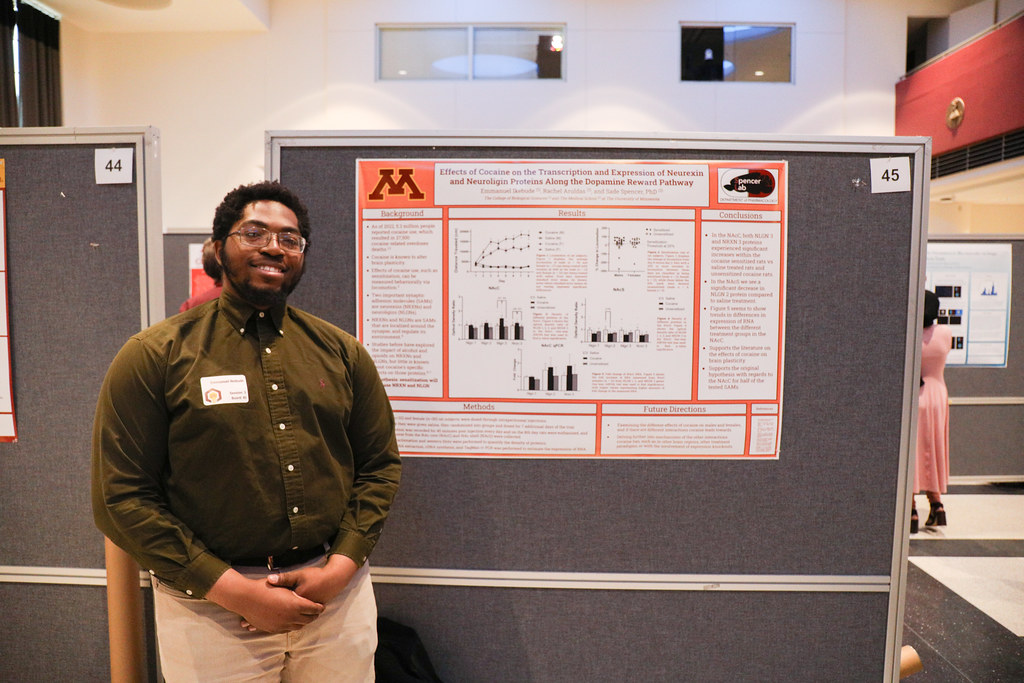
Emmanuel Ikebude is a graduating third year student majoring in Biochemistry. Ikabude has thought about pursuing medical school or industry work, but after experiencing time in the lab, Ikabude has thought more and more about pursuing graduate school for research. “I’ve really enjoyed the [scientific] process. When I joined the lab, I wasn’t super familiar with research, but as the months went on I was really able to dig into the literature and start doing my own experiments,” says Ikabude.
Big picture question: What role do lichens play in restoring vegetation in the ecosystems of Minnesota’s abandoned mines?
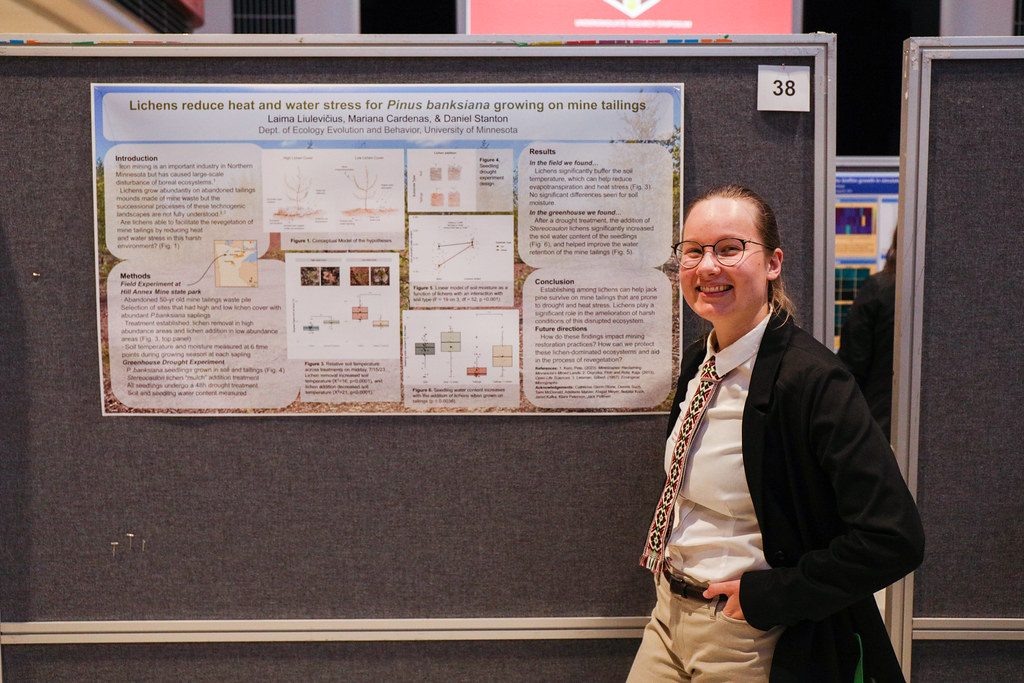
Laima Liulevicius is a senior majoring in Plant and Microbial Biology. “I remember feeling really anxious at the beginning of this research because I’d never established my own experiment before. But it was so, so empowering to know I could actually do this.” Liulevicius is excited to go straight to Quebec, Canada after graduating to get a master’s degree studying lichen in the context of ecosystems disrupted by mining activities.
Big picture question: What are the long-term effects of chemotherapy on a young person’s immune cells?
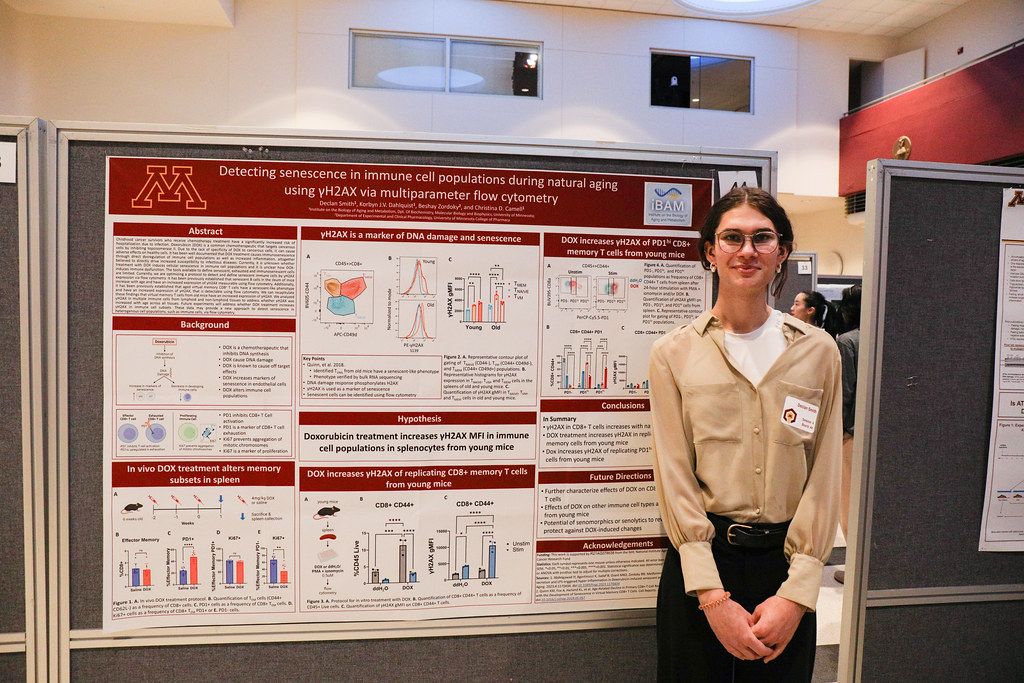
Declan Smith is a graduating senior majoring in biochemistry and will continue as a researcher in Camell’s lab after graduation and apply to graduate school in the fall. “I really enjoyed it. Doing this made me a lot more aware of how I think about and approach problems and questions in research,” says Smith.
— Adara Taylor